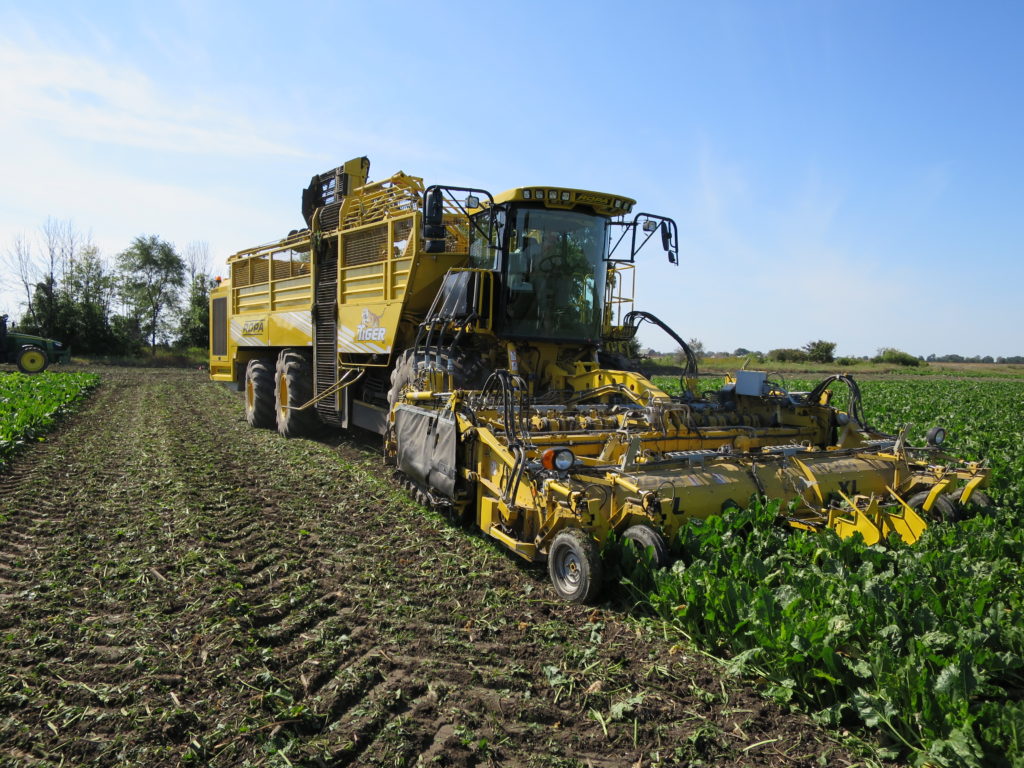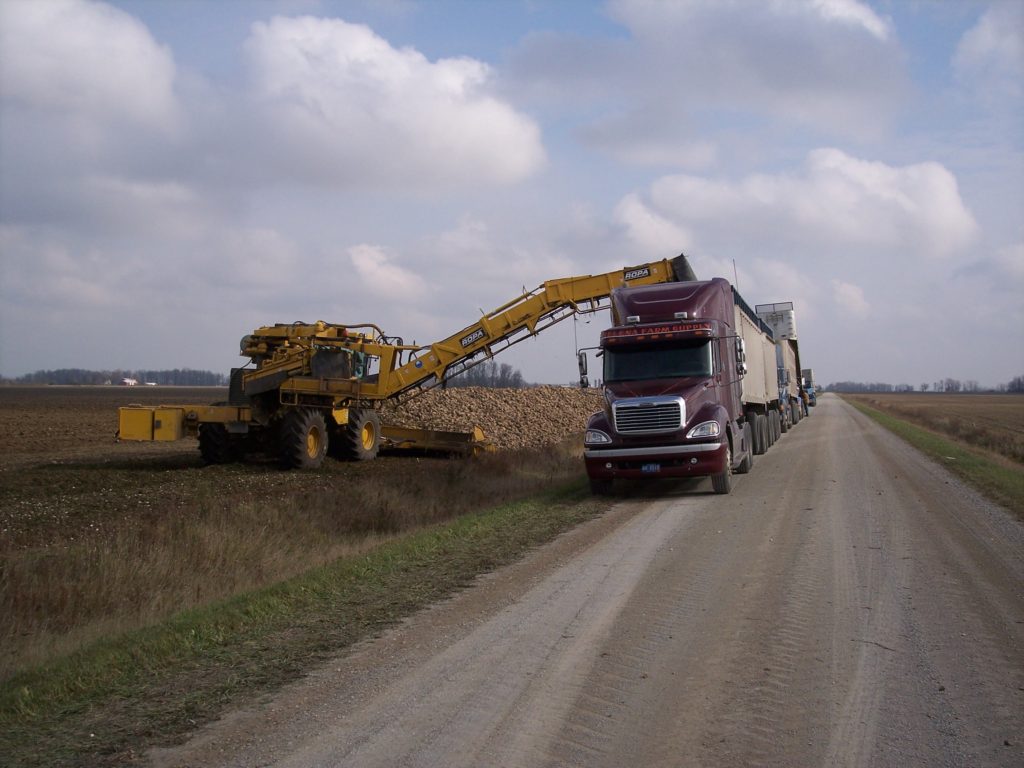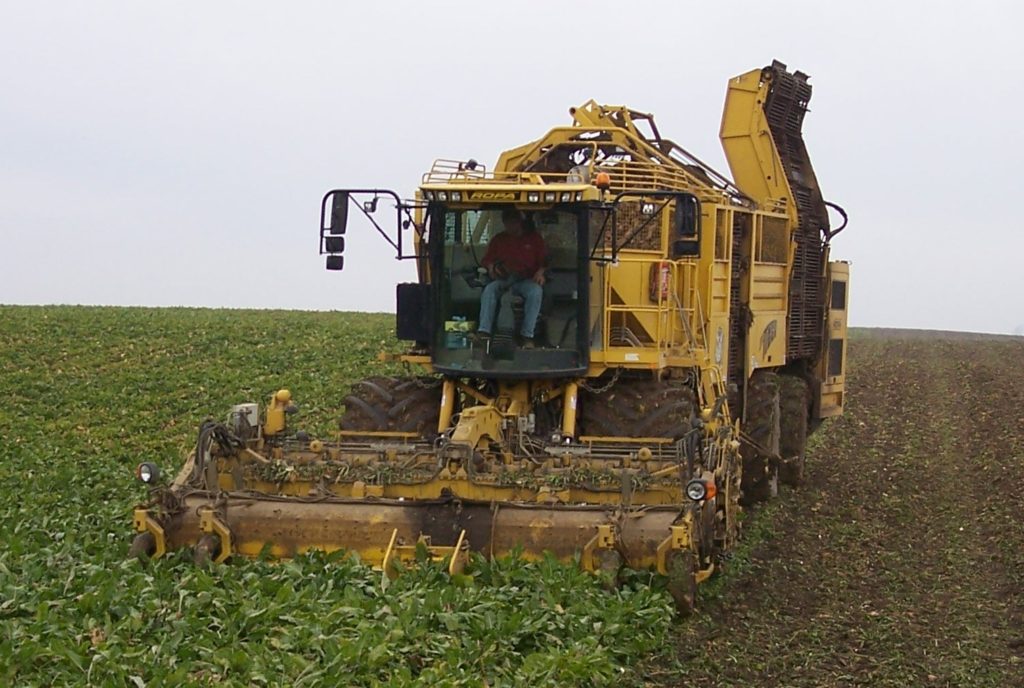Michigan Sugar Beet Harvest | A Story of Innovation
The Michigan sugar beet industry production ranks third in the United States with over 150,000 acres that produce well over four million tons of beets annually. However, when it comes to agriculture innovations, Michigan sugar beet producers are second to none. For example, they were the first beet industry in the USA to fully adopt primed seed developed by Germains Seed Technology. Seed priming and many other innovations adopted over the last twenty years have bolstered yields annually by 6/10ths of a ton/acre, now producing over 30 tons per acre average. The logistics of harvesting and processing large crops along with a short supply of labor had the industry asking “Is there a better way?”
Michigan Sugar Beet Harvest Methods
In the last fifteen years, the industry has studied the European system of harvesting. They have incorporated and modified those components that will work in the Michigan system. One big difference was the harvesters. European harvesters defoliate, lift and carry beets all in one operation. This method of harvesting has saved labor by eliminating the need for a separate topping operation and trucks following the harvester. Trucks can wait at the end of the field or beets can be piled on the headland for pick up later. Opening fields with these types of harvesters is quicker than conventional harvesters. Growers report less compaction and stress during harvest. Another advantage is these machines can harvest under wetter conditions. Currently, the Michigan Sugar industry has about 60 self-propelled harvesters that harvest about 1/3rd of the crop.

Ropa Tiger Harvesting Beets
Michigan Sugar Beet Piling Methods
Michigan has also adopted the practice of piling sugarbeets along the headlands for scheduled transport 1 to 3 days later. These piles are then picked up, cleaned and loaded directly into trucks. The trucks will line up single file on the road, not in the fields. Beets are considered clean and can go straight into the factory or put in special “stacker” piles at the piling grounds. This system has several advantages such as: allows tare to remain in fields, beets can go directly to factory flume resulting in less wear on pilers and congestion at the piling grounds. Currently, the Michigan Sugar industry has twenty-three field cleaners which handle about 1,000,000 tons of the crop.

Field Cleaning Beet Piled on Head Lands of Field and Loading Into Trucks
Michigan’s harvest season will run from late August thru mid-November. They have been innovative in developing strategies to bring in, store and process big crops. Improving factory efficiency and early start has been a key to their success. A voluntary early dig program was established with financial incentives that change depending on how early growers harvest. Early dig can start by late August with permanent piling beginning in late October.

ROPA Tiger-This is a self-propelled harvestor
There is generally up to 3 early dig periods that growers can apply with limited acres. A lottery type drawing determines who goes first for scheduled harvest. Beets harvested early are taken directly to the factories. If a grower participates in all three dig periods, they may be able to harvest up to fifty percent of their fields. Growers are allowed to trade harvest slots amongst themselves. This has been successful with twenty five to thirty percent of the acres scheduled for early dig. Factory processing usually will often go into mid-March. To help improve long term storage about twenty eight percent of the storage piles are ventilated.
